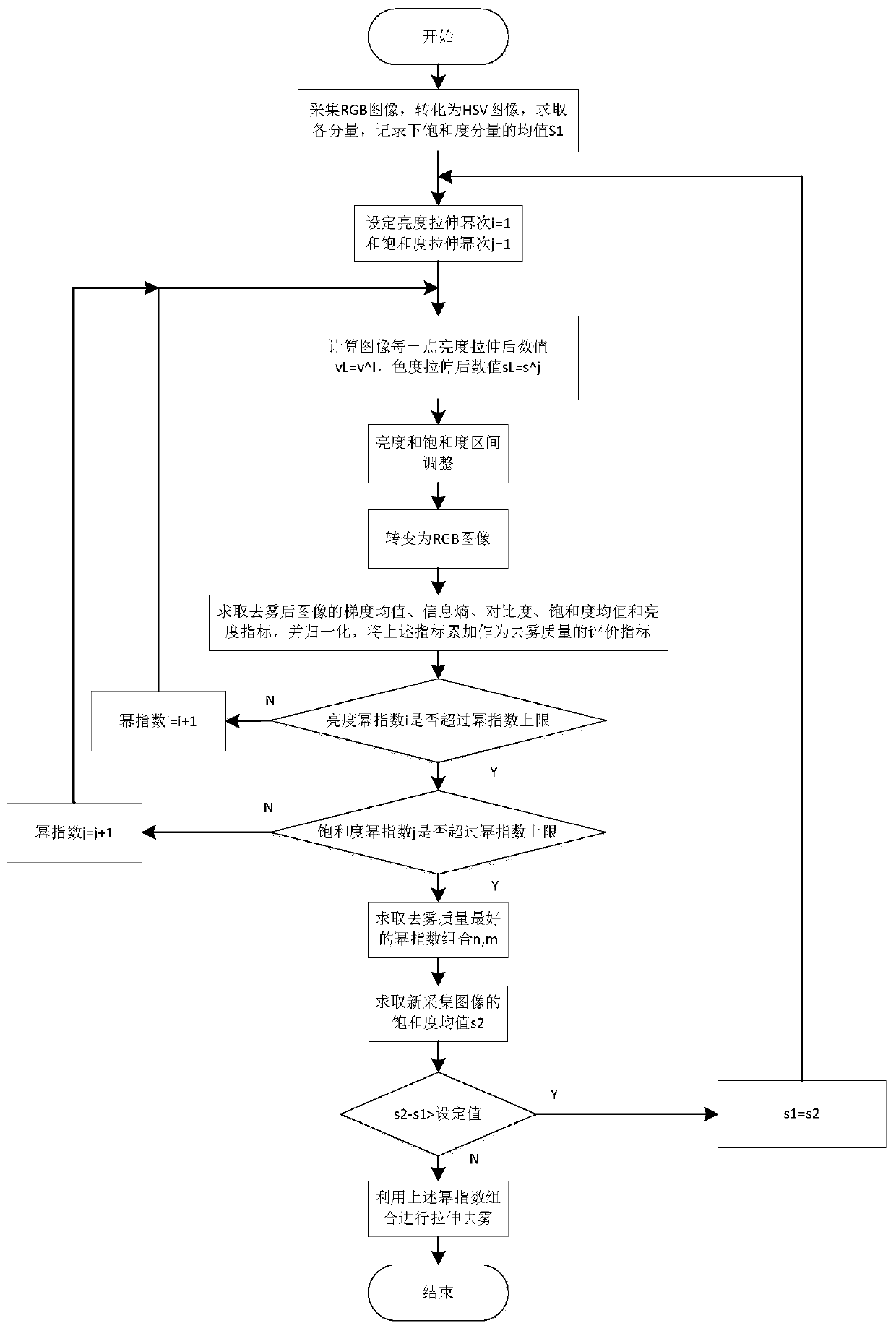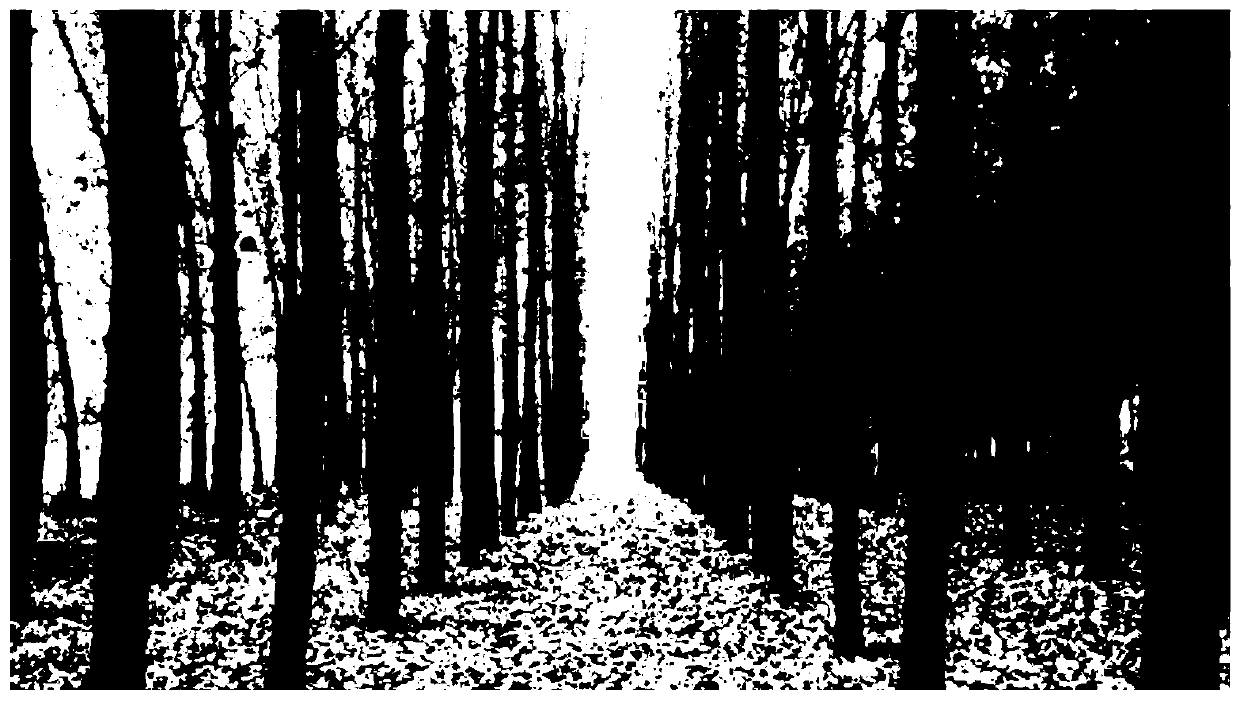Defogging method based on image enhancement
An image enhancement and image technology, applied in the field of image processing, can solve the problems of large amount of calculation and insufficient versatility, and achieve the effect of expanding the range
- Summary
- Abstract
- Description
- Claims
- Application Information
AI Technical Summary
Problems solved by technology
Method used
Image
Examples
Embodiment
[0031] Embodiment: This example is realized in maltabR2014a software. Complete as follows:
[0032] (1) The RGB foggy image that will be collected (such as figure 2 As shown) convert to HSV image by rgb2hsv() function, extract chroma component h, saturation component s and brightness component v, and calculate the mean value s1 of saturation;
[0033] (2) Power operation is performed on the saturation component s and the brightness component v respectively, s=s i , v=v j , where i=1:5, j=1:5, use the imadjust() function to adjust s and v to the interval [0,1], use the adjusted saturation component s and brightness component v to match the original Combination of chroma h components, use the hsv2rgb() function to convert these three component data into RGB images, such as image 3 As shown, there are 25 stretch combinations in this embodiment;
[0034](3) Calculate the gradient mean G, information entropy E, contrast C, saturation mean SE, and brightness mean HE of the im...
PUM
 Login to View More
Login to View More Abstract
Description
Claims
Application Information
 Login to View More
Login to View More - R&D
- Intellectual Property
- Life Sciences
- Materials
- Tech Scout
- Unparalleled Data Quality
- Higher Quality Content
- 60% Fewer Hallucinations
Browse by: Latest US Patents, China's latest patents, Technical Efficacy Thesaurus, Application Domain, Technology Topic, Popular Technical Reports.
© 2025 PatSnap. All rights reserved.Legal|Privacy policy|Modern Slavery Act Transparency Statement|Sitemap|About US| Contact US: help@patsnap.com



